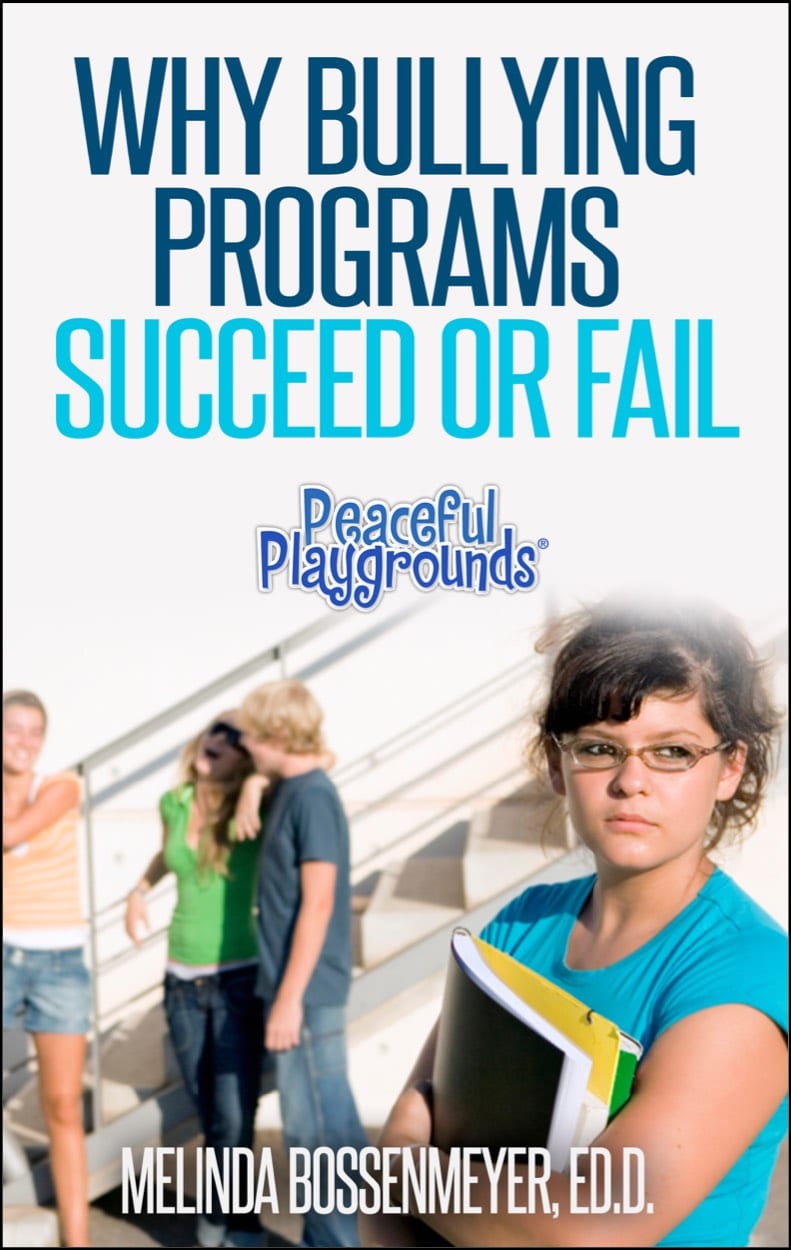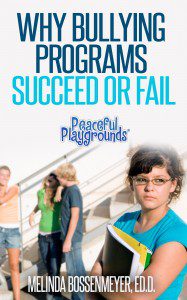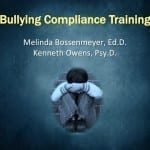Successful Bullying Prevention Programs : What Works?
Article by Dr. Melinda Bossenmeyer, The Recess Doctor
This is a poem written by Natalie, a high school student about bullying.
I used to get bullied, and
I didn’t know what to do
I wouldn’t want to come to school
I’d pretend I had the flu
But now things are so different
School’s a better place to be
Because of the peer mentors
And what they did for me.
Natalie is not alone in her experience with school bullying. In fact, thirty-six states have passed anti-bullying legislation which is indicative of the growing concern over bullying in schools.
The tipping point has been the school shootings in which three-fourths of the shooters’ school histories are indicative of being a victim or experiencing ongoing harassment. Additionally, 75% of students who carried weapons at school brought them to attack others because they felt persecuted, bullied, threatened, attacked, or previously injured by others while at school. (Data from the Secret Service Safe Schools Initiative
This information and research is available at NCSL.org in a report called School Bullying : Research and Reports. On a related issue, 50% of boys and 30% of girls who admitted bullying others at school carried a weapon. Conversely, 36% of boys and 15% of girls who were bullied reported carrying a weapon.
Clearly, bullying has captured the nation’s attention. Research indicates that 30% of middle school students report being involved in bullying within the last semester. Victims make up 17% and perpetrators make up 19%. Forty-eight percent of elementary school students report being bullied within the last year.
What is bullying and how does it differ from fighting? Bullying has three components. 1. Negative behavior with the intent of harming. 2. Behavior repeated over the course of time. 3. A relationship in which there is an imbalance of power between the victim and bully. Boys’ bullying often takes on the look of physical bullying, including fighting, hitting, kicking, or shoving. A common characteristic of the victim is that they have difficulty defending themselves.
Both girls and boys are victims and bullies. Girls’ type of bullying usually takes the form of non-verbal threatening and can look like isolation or exclusion from group activities or shun. A recent movie portrayed that behavior in a film called Mean Girls.
Bullying can have serious consequences for both victims and bullies. Research indicates that victims can show signs of headaches, stomachaches, depression, misplaced aggression, and difficulty with relationships and academics.
Bullies also suffer as a result of the socially unacceptable behavior going unchecked. Unchecked bullies are three times more likely as their non-bullying peers to end up with a criminal conviction by age 24. Research indicates that bullies are in desperate need of positive, pro-social role models including peers and adults.
Schools have wrestled with bullying programs for years. The next section will deal with schools and programs that work and those that don’t.
Download the Article: Why Bullying Programs Success or fail
Bullying-Programs-succeed-12042015-F.pdf
Version: 1
NOTE: if you have a popup blocker, please allow it permission to download the file.
Depending on your internet speed, your download should open in a new browser tab
between 3-10 seconds.
Details
[jwplayer mediaid=”504″]
Bully Programs that don’t work
- Zero tolerance Policies- While well-intentioned, doing nothing but eliminating bullies from schools is neither feasible nor effective. Since research indicates that 20% of students bully another at some time in their school career, kicking out 20% of the students obviously won’t work.
- Group therapy for students who bully also does not work. First and foremost, the bully needs good role models. Containing them with like offenders, while well-intentioned is a recipe for disaster and an over exposure to non-social behaviors.
- Conflict Resolution Programs- Since bullies victimize, putting the bully and victim together can be extremely upsetting to the victim. Mediation is not an appropriate response. No one deserves to be bullied.
UPDATE on Successful Bullying Prevention Programs. It should be noted. During the mid-term elections 2022 a CBS poll revealed that parents concerns regarding their children and schools, 72% said bullying was a concern. 72% of parents also said they are concerned with the learning decline due to COVID and 68% said gun violence. The bullying statistic at 72% of parents from a nationwide poll is a new statistical high for bullying in schools.
Melinda Bossenmeyer, Ed.D. is an expert witness for school supervision, playground injury cases, physical education, and coaching cases related to supervision. Professional articles by Dr. Bossenmeyer © Peaceful Playgrounds 1998 All Rights Reserved
Bullying Prevention Online Training.
Download the remainder of this article in the member’s area. Link to Content Library area Registration.

Bullying Prevention Link
For a deeper dive into “Bullying Prevention Resources” visit our Content Library. It’s FREE.
You might also be interested in our Bullying Prevention for Teachers Online Training Course.




